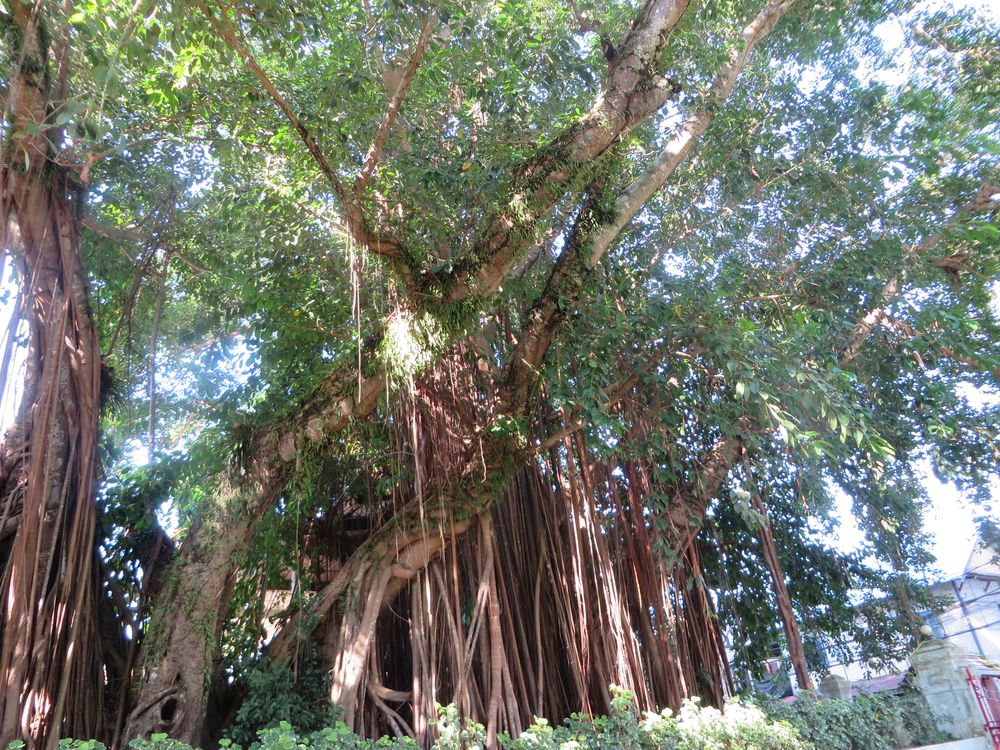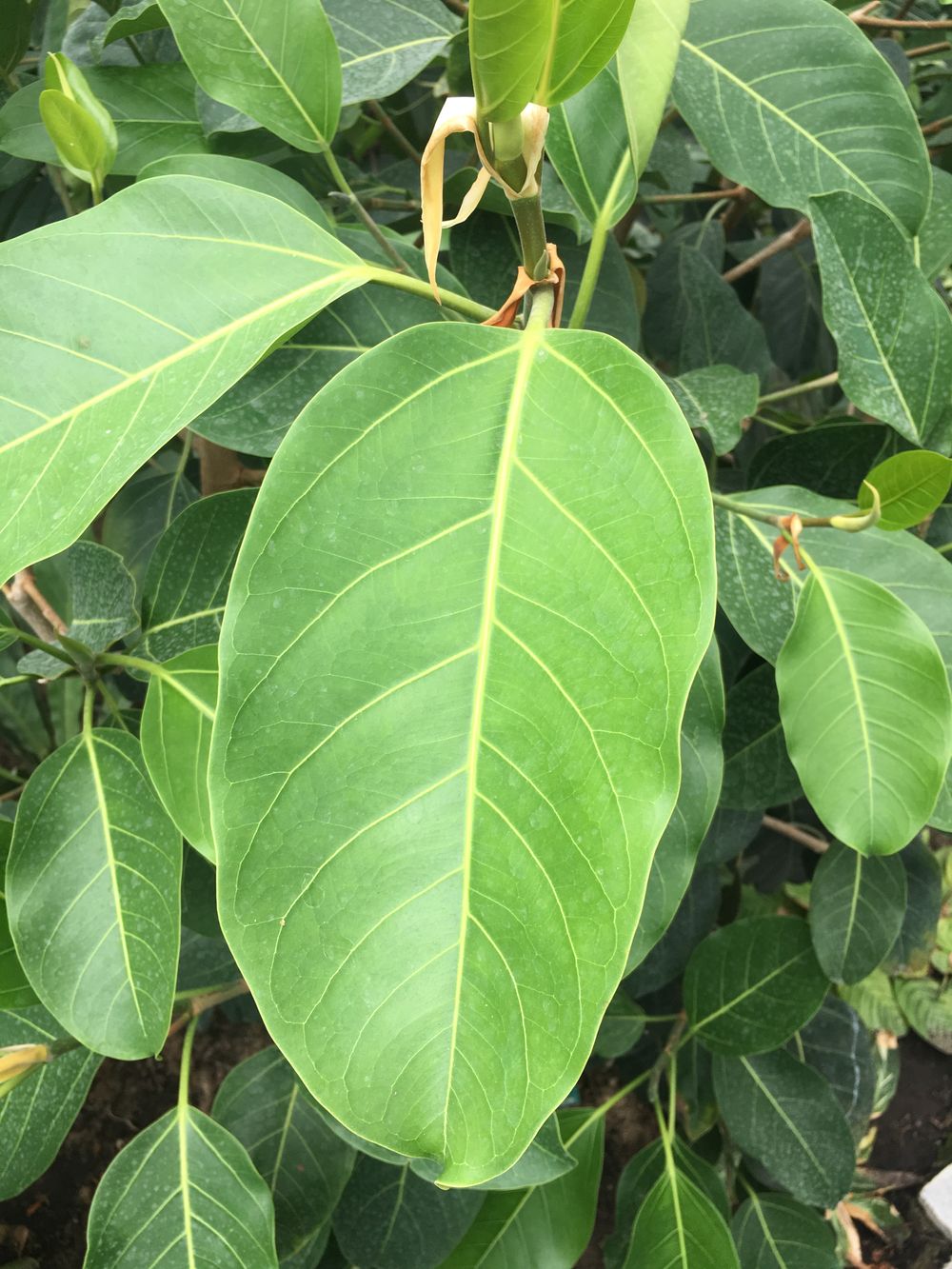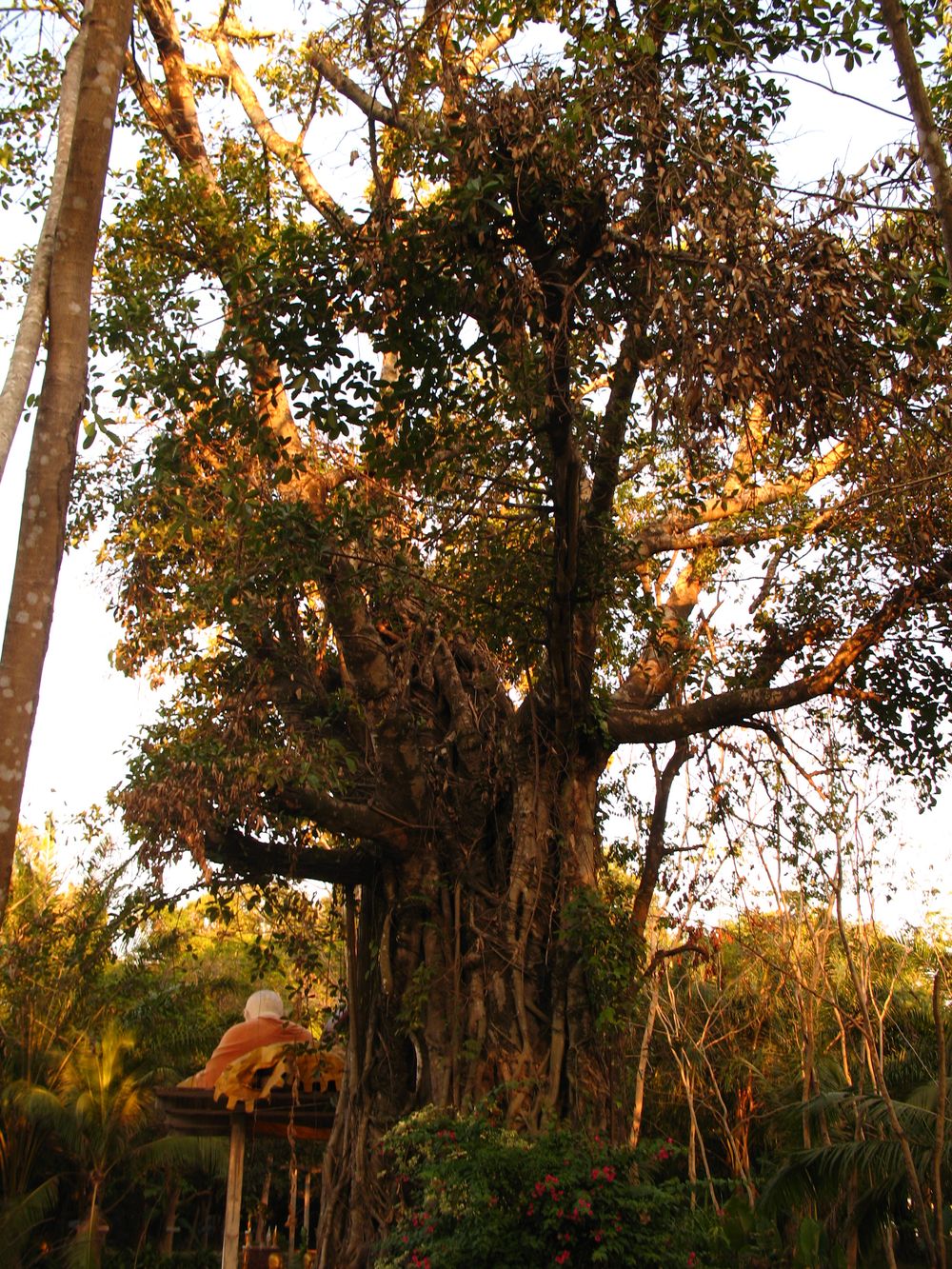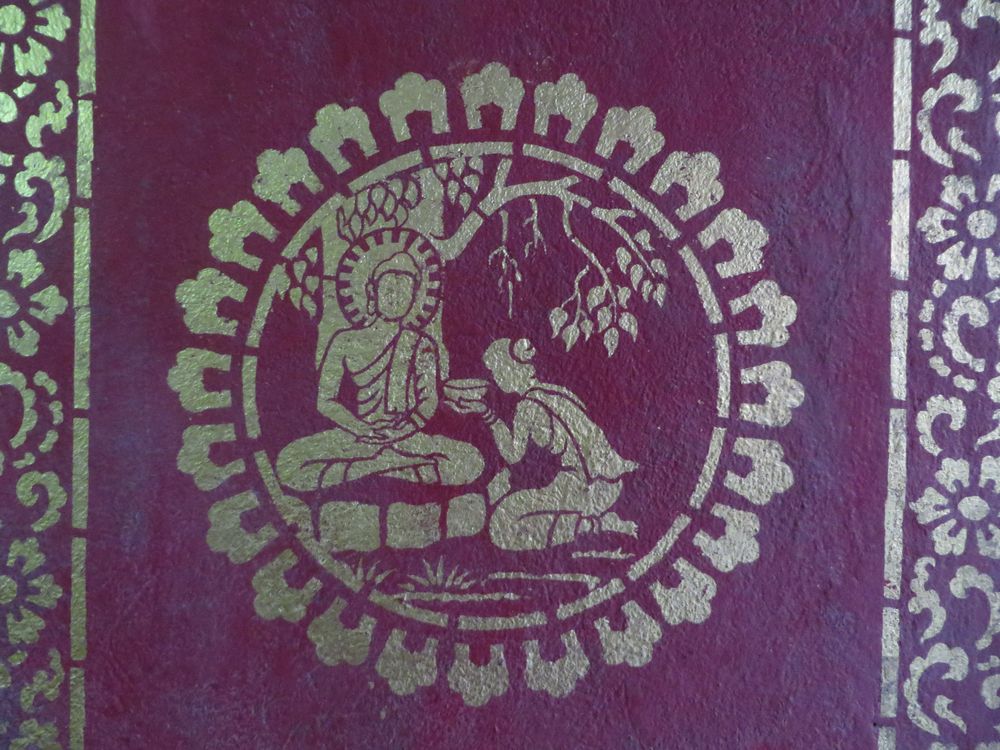Fig trees (genus Ficus) are a group of mainly tropical plants of the Moraceae family in which we find trees, shrubs or lianas. More than 1,000 species are known, about 50 of which are found in Laos and about ten of which are very present in the material and especially spiritual life of the Lao people, in particular the tone Pho, “the Tree of Illumination”.
The fig trees have botanical characteristics that have marked the imagination of the people who live in contact with them: they all produce latex, and white sap that in many cultures represents milk; the flowers of the fig trees are not apparent, they are hidden in an organ that will become the fruit, which can then be thought of as being born from nothing; fig trees are often epiphytes, they take roots on other trees that they will choke afterwards, which earned them the reputation of being “stranglers”; moreover, the hanging branches of some of them have the particularity of taking root by touching the ground, so that trunk, aerial roots and branches are mixed to give trees of impressive size. This is the case of the banyan tree which is especially sacred to Hindus. It takes its name from the merchants (banyan) who met under its shade. Indeed, it is a powerful tree that can become enormous thanks to the aerial roots that take root and form secondary trunks. They can be seen everywhere in Laos, but especially in the gardens of pagodas where they are the place of worship of the phi (spirits).
Almost all ficus trees are used in traditional medicine; the banyan bark is astringent and used against dysentery. The white latex is applied to rheumatism and other muscular pains.
Les figuiers (genre Ficus) sont un groupe de plantes surtout tropicales de la famille des Moracées dans lequel on trouve des arbres, des arbustes ou des lianes. On en connaît plus de 1 000 espèces, une bonne cinquantaine se rencontrent au Laos et une dizaine est très présente dans la vie matérielle et surtout spirituelle des Lao, en particulier le tone Pho, « l’Arbre de l’Illumination ».
Les figuiers ont des caractéristiques botaniques qui ont marqué l’imagination des peuples qui vivent à leur contact: ils produisent tous du latex, sève blanche qui dans de nombreuses cultures représente le lait; les fleurs des figuiers ne sont pas apparentes, elles sont cachées dans un organe qui va devenir le fruit dont on peut penser alors qu’il naît de rien; les figuiers sont souvent épiphytes, ils prennent racines sur d’autres arbres qu’ils étoufferont par la suite ce qui leur a valu la réputation d’être « des étrangleurs »; en outre les branches pendantes de certains d’entre eux ont la particularité de prendre racine en touchant le sol, si bien que tronc, racines aériennes et branches se mêlent pour donner des arbres de taille impressionnante. C’est le cas du banian qui est surtout sacré chez les Hindouistes. Il tient son nom des marchands (banyan) qui se réunissaient sous son ombre. En effet, c’est un arbre puissant qui peut devenir énorme grâce aux racines aériennes qui reprennent pied et forment des troncs secondaires. On en voit un peu partout au Laos, mais surtout il est vrai dans les jardins des pagodes où ils sont le lieu d’un culte rendu aux phi (esprits).
Presque tous les ficus ont des usages en médecine traditionnelle; l’écorce du banian est astringente et employée contre la dysenterie. Le latex blanc est appliqué sur les rhumatismes et autres douleurs musculaires.




Fig trees (genus Ficus) are a group of mainly tropical plants of the Moraceae family in which we find trees, shrubs or lianas. More than 1,000 species are known, about 50 of which are found in Laos and about ten of which are very present in the material and especially spiritual life of the Lao people, in particular the tone Pho, “the Tree of Illumination”.
The fig trees have botanical characteristics that have marked the imagination of the people who live in contact with them: they all produce latex, and white sap that in many cultures represents milk; the flowers of the fig trees are not apparent, they are hidden in an organ that will become the fruit, which can then be thought of as being born from nothing; fig trees are often epiphytes, they take roots on other trees that they will choke afterwards, which earned them the reputation of being “stranglers”; moreover, the hanging branches of some of them have the particularity of taking root by touching the ground, so that trunk, aerial roots and branches are mixed to give trees of impressive size. This is the case of the banyan tree which is especially sacred to Hindus. It takes its name from the merchants (banyan) who met under its shade. Indeed, it is a powerful tree that can become enormous thanks to the aerial roots that take root and form secondary trunks. They can be seen everywhere in Laos, but especially in the gardens of pagodas where they are the place of worship of the phi (spirits).
Almost all ficus trees are used in traditional medicine; the banyan bark is astringent and used against dysentery. The white latex is applied to rheumatism and other muscular pains.
Les figuiers (genre Ficus) sont un groupe de plantes surtout tropicales de la famille des Moracées dans lequel on trouve des arbres, des arbustes ou des lianes. On en connaît plus de 1 000 espèces, une bonne cinquantaine se rencontrent au Laos et une dizaine est très présente dans la vie matérielle et surtout spirituelle des Lao, en particulier le tone Pho, « l’Arbre de l’Illumination ».
Les figuiers ont des caractéristiques botaniques qui ont marqué l’imagination des peuples qui vivent à leur contact: ils produisent tous du latex, sève blanche qui dans de nombreuses cultures représente le lait; les fleurs des figuiers ne sont pas apparentes, elles sont cachées dans un organe qui va devenir le fruit dont on peut penser alors qu’il naît de rien; les figuiers sont souvent épiphytes, ils prennent racines sur d’autres arbres qu’ils étoufferont par la suite ce qui leur a valu la réputation d’être « des étrangleurs »; en outre les branches pendantes de certains d’entre eux ont la particularité de prendre racine en touchant le sol, si bien que tronc, racines aériennes et branches se mêlent pour donner des arbres de taille impressionnante. C’est le cas du banian qui est surtout sacré chez les Hindouistes. Il tient son nom des marchands (banyan) qui se réunissaient sous son ombre. En effet, c’est un arbre puissant qui peut devenir énorme grâce aux racines aériennes qui reprennent pied et forment des troncs secondaires. On en voit un peu partout au Laos, mais surtout il est vrai dans les jardins des pagodes où ils sont le lieu d’un culte rendu aux phi (esprits).
Presque tous les ficus ont des usages en médecine traditionnelle; l’écorce du banian est astringente et employée contre la dysenterie. Le latex blanc est appliqué sur les rhumatismes et autres douleurs musculaires.








Fig trees (genus Ficus) are a group of mainly tropical plants of the Moraceae family in which we find trees, shrubs or lianas. More than 1,000 species are known, about 50 of which are found in Laos and about ten of which are very present in the material and especially spiritual life of the Lao people, in particular the tone Pho, “the Tree of Illumination”.
The fig trees have botanical characteristics that have marked the imagination of the people who live in contact with them: they all produce latex, and white sap that in many cultures represents milk; the flowers of the fig trees are not apparent, they are hidden in an organ that will become the fruit, which can then be thought of as being born from nothing; fig trees are often epiphytes, they take roots on other trees that they will choke afterwards, which earned them the reputation of being “stranglers”; moreover, the hanging branches of some of them have the particularity of taking root by touching the ground, so that trunk, aerial roots and branches are mixed to give trees of impressive size. This is the case of the banyan tree which is especially sacred to Hindus. It takes its name from the merchants (banyan) who met under its shade. Indeed, it is a powerful tree that can become enormous thanks to the aerial roots that take root and form secondary trunks. They can be seen everywhere in Laos, but especially in the gardens of pagodas where they are the place of worship of the phi (spirits).
Almost all ficus trees are used in traditional medicine; the banyan bark is astringent and used against dysentery. The white latex is applied to rheumatism and other muscular pains.
Les figuiers (genre Ficus) sont un groupe de plantes surtout tropicales de la famille des Moracées dans lequel on trouve des arbres, des arbustes ou des lianes. On en connaît plus de 1 000 espèces, une bonne cinquantaine se rencontrent au Laos et une dizaine est très présente dans la vie matérielle et surtout spirituelle des Lao, en particulier le tone Pho, « l’Arbre de l’Illumination ».
Les figuiers ont des caractéristiques botaniques qui ont marqué l’imagination des peuples qui vivent à leur contact: ils produisent tous du latex, sève blanche qui dans de nombreuses cultures représente le lait; les fleurs des figuiers ne sont pas apparentes, elles sont cachées dans un organe qui va devenir le fruit dont on peut penser alors qu’il naît de rien; les figuiers sont souvent épiphytes, ils prennent racines sur d’autres arbres qu’ils étoufferont par la suite ce qui leur a valu la réputation d’être « des étrangleurs »; en outre les branches pendantes de certains d’entre eux ont la particularité de prendre racine en touchant le sol, si bien que tronc, racines aériennes et branches se mêlent pour donner des arbres de taille impressionnante. C’est le cas du banian qui est surtout sacré chez les Hindouistes. Il tient son nom des marchands (banyan) qui se réunissaient sous son ombre. En effet, c’est un arbre puissant qui peut devenir énorme grâce aux racines aériennes qui reprennent pied et forment des troncs secondaires. On en voit un peu partout au Laos, mais surtout il est vrai dans les jardins des pagodes où ils sont le lieu d’un culte rendu aux phi (esprits).
Presque tous les ficus ont des usages en médecine traditionnelle; l’écorce du banian est astringente et employée contre la dysenterie. Le latex blanc est appliqué sur les rhumatismes et autres douleurs musculaires.


